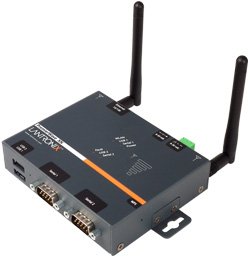Tables Overview
In Excel 2007, a Table is a range of data that can be sorted, filtered, and formatted according to user specifications.
Excel Tables are simple databases, which are stored in Excel workbook files. Excel prefers the term table for its database-like tools and features in order to distinguish them from database applications such as Access. This document provides a basic overview of Tables in Excel 2007.
Table Terms
Excel Tables are made up of columns, column labels, and rows; they can be sorted and/or filtered according to your specifications.
Columns
determine the informational structure of table rows
NOTE: These are the same as database fields.
determine the informational structure of table rows
NOTE: These are the same as database fields.
Column Labels
identify columns; they often have special formatting
NOTE: These are the same as database field names.
identify columns; they often have special formatting
NOTE: These are the same as database field names.
Rows
contain specific data, according to column labels
NOTE: These are the same as database records.
contain specific data, according to column labels
NOTE: These are the same as database records.
AutoFilter
button at top of each Table column; provides quick access to sort and filter tools
button at top of each Table column; provides quick access to sort and filter tools
Sort
arranges Table data in order according to text, numbers, time, date, or specific criteria (also see Using the Sort Command).
NOTE: Unlike filter, sort displays all table data, but puts them in a specific order.
arranges Table data in order according to text, numbers, time, date, or specific criteria (also see Using the Sort Command).
NOTE: Unlike filter, sort displays all table data, but puts them in a specific order.
Filter
displays only data meeting criteria you specify (e.g., name, year) (also see Filtering Your Database).
NOTE: Unlike sorting, filtering hides some table data, showing only that which fits your criteria.
displays only data meeting criteria you specify (e.g., name, year) (also see Filtering Your Database).
NOTE: Unlike sorting, filtering hides some table data, showing only that which fits your criteria.

Tips for Setting Up a Table
There are a few things to consider before creating your Table:- Columns are the foundation of an Excel Table. Table rows are easy to add and remove, but adding or removing Table columns disrupts a Table's basic structure. To save time and frustration, determine exactly what columns are necessary before creating your Table.
- Do not leave blank rows in the middle of your Table. Blank rows will interfere with Table analysis functions.
- Enter numeric data either as numbers or as text; do not combine the two.
HINTS:
When using analysis functions, numbers are counted before text.
When using mathematical formulas (e.g., SUM and AVERAGE), numbers cannot be entered as text.
For more information on entering numbers and text, refer to Getting Started with Excel.
Make sure to let me know in the comments below or on our
Facebook page how you've got with it or Do you have any questions


No comments:
Post a Comment